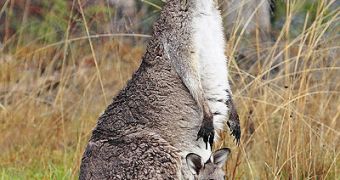Australian authorities have suspended the killing of thousands of kangaroos near a disused military installation near Canberra, after environmentalists and animal rights groups have argued that the killings are unnecessary and unjustified. The animals came under attack when military officials said that they were destroying the land near the facility, and also that they were endangering already threatened species living nearby, as well as the grasslands in and around the camp.
Out of the estimated 7,000 kangaroos that roam the landscape around the military facility, approximately 4,000 have already been killed by civilian marksmen, but a court has recently lifted all the kangaroo hunting permits, pending a scientific review of the exact “damage” the military says the creatures are inflicting. Representatives of the Army have argued that the thousands of kangaroos around the Majura Training Area have overpopulated the territory, and that they will make the entire area unsustainable for other animal species as well. Some of the kangaroos' neighbors are highly endangered.
The BBC reports that an appeal tribunal has temporarily ordered that all hunting activity in the region be stopped, and that a three-judge panel will conduct a hearing on the matter on June 2nd. At that time, both the military and animal protection groups will present their scientific evidence of why and why not the animals should be killed. Throughout Australia, kangaroos are often shot for meat or simply for sport. Some of the animals are put to death by farmers seeking to protect their sheep and cattle grazing fields from the marsupials, while a fairly large number is killed annually on Australia's highways.
Kangaroos are fairly peaceful animals, although they will go to some lengths to procure food. Their trademark characteristic are their over-developed hind legs, as well as the fact that they use hopping as their main form of locomotion. They can reach impressive speeds of up to 70 kilometers per hour (44 miles per hour) over short distances, and the larger species can reach about 90 kilograms (200 pounds) in weight, at a top height of 2 meters (6 feet 7 inches).

 14 DAY TRIAL //
14 DAY TRIAL //